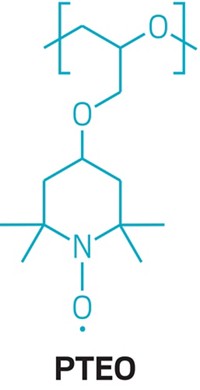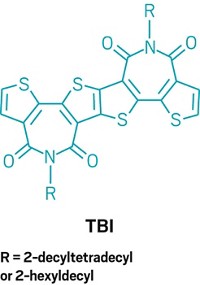Advertisement
Grab your lab coat. Let's get started
Welcome!
Welcome!
Create an account below to get 6 C&EN articles per month, receive newsletters and more - all free.
It seems this is your first time logging in online. Please enter the following information to continue.
As an ACS member you automatically get access to this site. All we need is few more details to create your reading experience.
Not you? Sign in with a different account.
Not you? Sign in with a different account.
ERROR 1
ERROR 1
ERROR 2
ERROR 2
ERROR 2
ERROR 2
ERROR 2
Password and Confirm password must match.
If you have an ACS member number, please enter it here so we can link this account to your membership. (optional)
ERROR 2
ACS values your privacy. By submitting your information, you are gaining access to C&EN and subscribing to our weekly newsletter. We use the information you provide to make your reading experience better, and we will never sell your data to third party members.
Materials
Diarylethene molecular switch has staying power
Devices fitted with light-activated molecules last longer than a year
by Bethany Halford
June 17, 2016
| A version of this story appeared in
Volume 94, Issue 25

The switch is as fundamental to electronics as the covalent bond is to chemistry: Switches make and break currents, whereas bonds make and break molecules. By covalently tethering a diarylethene to two graphene electrodes, scientists have harnessed the bond-breaking and bond-making process to create a single-molecule switch. The robust switch works at room temperature and is stable for more than a year.
In its open state, when there is no direct bond between the diarylethene’s thiophene units, the molecule acts as an insulator. But shine ultraviolet light on it, and a bond will form between the two thiophenes, making it possible for the molecule to conduct electricity. Visible light breaks the bond and returns the molecule to its insulating state.
Researchers had known that diarylethene molecules could behave as molecular switches, but previous examples of such switches weren’t necessarily reversible and tended to degrade over time. Covalently linking the molecule to graphene electrodes with appropriately sized linkers helped the research team, led by Peking University’s Xuefeng Guo and H. Q. Xu and University of Pennsylvania’s Abraham Nitzan, to create a successful switch (Science 2016, DOI: 10.1126/science.aaf6298)
The molecular switch could be a key component for ever-shrinking electronic devices. It could also guide the creation of devices that interface organic and inorganic materials.





Join the conversation
Contact the reporter
Submit a Letter to the Editor for publication
Engage with us on Twitter